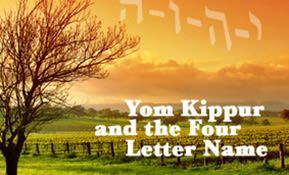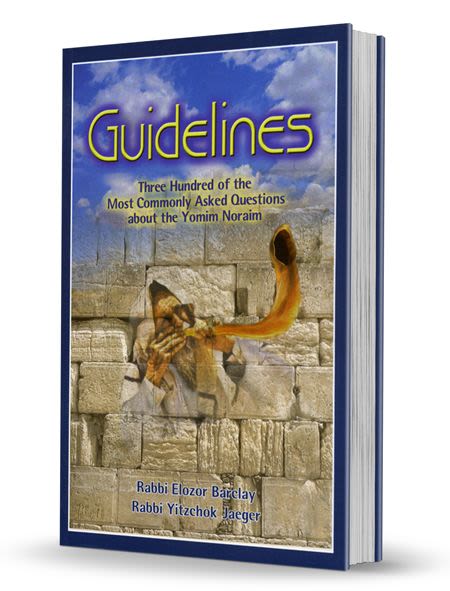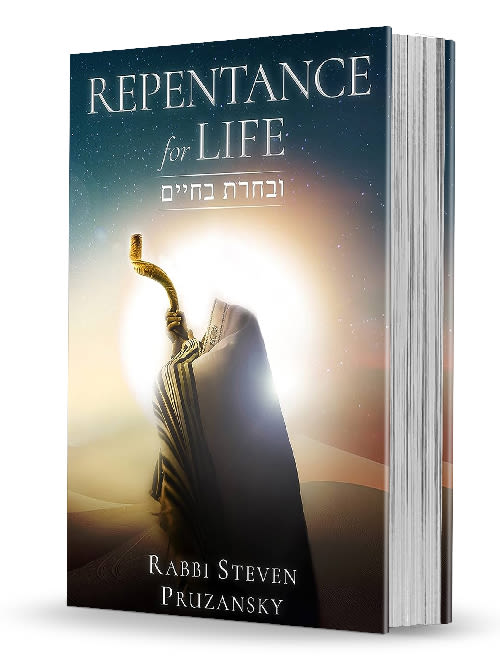
Sefer Yonah and the Soul’s Journey
After havdala, the Chassid couldn’t contain himself any longer. He threw himself at his master’s feet and cried out, "What have I done wrong?”

In Mincha of Yom Kippur, the baal koreh reads Sefer Yonah as the maftir for the afternoon Torah reading. Who was Yonah and what is his Yom Kippur message to us?
One opinion in the Gemara (Sanhedrin 113a) is that Yonah was the child who was brought back to life by the prophet Eliyahu. After Eliyahu ascended to heaven, Yonah became a student of Elisha, and later, Yonah himself became a prophet.
The Story
The story line of Yonah is well known. Hashem commands Yonah to go to a non-Jewish city, Nineveh. Nineveh was a corrupt city; theft and robbery were rampant. Yonah was to call out that the city would ‘turn over’ in forty days. If the people repented, this would be the meaning of ‘turn over.’ If they did not repent, ‘turn over’ would mean that the city would be destroyed.
Yonah does not go to Nineveh immediately. Instead, he spends a fortune to rent a ship to take him away from Eretz Yisrael. He hopes that Hashem will understand his point. He does not want this shelichut (mission). He believes that the teshuva of the people of Nineveh will be superficial, and reflect badly on the Jews, who are not even doing superficial teshuva despite repeated reminders from their prophets.
Hashem has many prophets. He can find a substitute for Yonah, but He doesn’t. Instead, He causes a storm to threaten the ship that Yonah is sailing on. The sailors realize that the storm is a divine sign. They begin to pray. Yonah goes down into the bowels of the ship and awaits his death. He falls asleep and the sailors find him. After deliberating what to do, they finally decide take Yonah’s own advice and throw him overboard. As soon as they dip Yonah’s feet into the waters, the waters return to calm, so they haul him aboard again. Again the wind and waters swell up. They put Yonah further into the water and the waters are quiet again. They try to save him again, only to have the waters threaten the ship every time they remove him. Finally, after offering a prayer that Hashem forgive them, the sailors throw Yonah overboard. The sea is now quiet; they stand in awe. (Eventually they become baalei teshuva.)
Hashem has created a big fish to save Yonah. This fish has been waiting for all time to perform this mission. The fish arrives, swallows Yonah, and provides him with a quiet, safe haven for three days. In the belly of the fish, Yonah begins to pray. He asks that his life be spared and he agrees to his mission to Nineveh.
The fish brings Yonah back to land. Yonah travels to Nineveh, makes his pronouncement, and sees the result he expected. The city has been expecting a heavenly messenger for some time now. They don’t even need to hear what their crimes are, they know. People return stolen items. They are frantic. They act in extreme ways. They force animals and young and old people to fast. They destroy an entire building if there is one stolen item in it. Yonah watches all this bitterly. He knows that the people of Nineveh are on a temporary “high.” His worst fears have been realized.
At the end of Sefer Yonah, Yonah builds a small hut outside the city and awaits Hashem’s word. His ‘vacation’ in the fish has burned him, and the hot sun hurts his sensitive skin. He feels that his end is near. Miraculously, a shade tree grows right over his head. He thanks Hashem for this miracle and waits. Hashem causes the tree to be eaten by a worm, and the sun and hot wind beat down on Yonah again. He cries out for help and bemoans the loss of the tree.
The finale of the story is Hashem’s word to Yonah: “You had pity and needed the tree for your life, and I shouldn’t have pity on the city of Nineveh, which has at least one hundred and twenty-thousand men, most of whom are ignorant?”
This entire story cries out, Darsheini! (explain and clarify). We cannot hide behind the excuse that we have other things in Torah that we need to learn and do not have time for this small book. Our Rabbis have commanded us to study it every year on our most holy day, during the holiest time of that day.
A Chassid of the Baal Shem Tov
Here is a story from the Baal Shem Tov. One of his chassidim traveled for weeks to daven with the holy Baal Shem on Rosh Hashanah. It was late, a few minutes before sunset, and he still had half a mile to travel. The chassid saw a Jew standing on the road. This Jew was delighted to see our harried Chassid. He told him that in that neighborhood there were nine other Jews who had to be there for Rosh Hashanah and they needed a tenth man for a minyan. And here, Hashem had sent him to be the tenth man!
The chassid was dumbfounded. “I traveled for weeks to be in shul with my master the Baal Shem Tov and I’m only a few minutes away. How can you expect me to stay here?” The chassid ran to the shul of the Baal Shem Tov. He had a good davening, but afterward the Rebbe refused to greet him, or even acknowledge his presence. This continued all through Yom Tov. After havdalah, the Chassid couldn’t contain himself any longer. He threw himself at his master’s feet and cried out, “What have I done wrong?” The holy Baal Shem looked at him with sadness and dismay and said, ”Your soul came down to this world with one mission, to daven with those nine men on Rosh Hashanah.”
Yonah was given a mission that he tried to avoid. In His Infinite Mercy, Hashem didn’t let that happen. As a child, Yonah had experienced techiyat hameisim, revival of the dead. He died and was given a second chance at life; this was his first hint. The name Yonah means ‘dove’. The Jewish people is called Hashem’s dove, a reference to our infinite loyalty to our Heavenly Soul Mate; this was Yonah’s second hint. And even deeper, his name spells Yavan Heh. Yavan, Greece, is that aspect of the exile that can eventually be redeemed. The wisdom of Yavan, deriving from Yefet, the third son of Noach, can find elevation if it humbly bends its head to its source in the Torah.
Yonah’s mission was about giving a second chance to the as yet un-redeemed aspect of creation. Yonah did correctly understand that his primary task was to serve the Jewish people. The Midrash compares him to Moshe (Moses), who offered to give up his life in both worlds to save us. Yonah gave up his entire fortune to avoid doing something that he thought would bring criticism on the Jewish people.
Hashem saw that Yonah’s motives were pure. He wanted to expand Yonah’s vision so he would see that he could, indeed, help his people infinitely by the very action that Hashem had suggested. By bring the city of Nineveh to whatever level of teshuva they were capable of, Yonah opened the gates for our teshuva to be accepted, on whatever level we are capable of.
In Tana D’bai Eliyahu, we hear the reaction of Eliyahu Hanavi (Elijah the Prophet), as taught to the Tanna Rabbi Anan. Eliyahu prays, ”Please, Father in Heaven, as you had pity on the people of Nineveh, surely you must have pity on us, Your children, who represent You in this world. Therefore, forgive us and give us life.”
The Soul’s Journey
The teshuva of the people of Nineveh resembles America’s reaction to the events of September 11. At first, we Jews hoped that the so-called civilized world would finally understand the horror of terrorism, recognize the need to end any pretense of political discussion, and simply eradicate this evil, which also surrounds us here in the Land. Their teshuva was not sustained. The extreme reaction of the Americans – and the Ninevites – never attacked the root of the crime.
Nevertheless, the yeshuah (salvation) will come to us from the right place. The Zohar compares Yonah’s journey to the journey of every soul. Yonah, the Godly soul, is bidden by Hashem to enter the world of Nineveh. Nineveh, the Zohar teaches, refers to the dwelling place – Neve. The extra letter Nun in the Hebrew refers to a double dwelling. This is about the soul’s descent, first into this world, then into the human body. Understandably, the soul hesitates to leave its holy and secure place to travel downwards, but Hashem wants it to do just that. The highest avoda that we can attain is, davka, in the physicality of this world: transforming this world into a dwelling place for God’s Presence.
The soul does eventually enter the ship of the body, but it is distracted by the very materialistic element it originally tried to avoid. This is Tarshish, which the Zohar says is Trei Sas – two (or multiple) superficial pleasures of Olam Hazeh. The struggle to awake from our spiritual slumber is Yonah asleep in the bowels of the ship. He is sent helpers, the Captain of the ship, who represents the Tzaddik, and the sailors, who represent the different parts of his own body!
The Tzaddik calls out to him: who are you, what is your occupation, where do you come from? The sailors also tell him to pray, a veiled reference to the hints that our bodies send us when we live out-of-alignment with the Divine Plan. They eventually throw him into the Yam – the Sea of Torah, where he is caught by the Dag (the fish) – the Tzaddik, and begins his Tefilla.
Sefer Yonah, which began with the sad word Vayehi, ends with the greatness of the word Raba, much as the life of Yonah, the loyal soul, does. Yonah reminds us that originally we were perfect, with the best of intentions. We might have become a bit distracted along the way, during the year, but here we have the great gift of Yom Kippur, the great day of clarity to re-align ourselves. On this day, we are relieved of the need to engage in the physical world. We are free of the mitzva of subjugating the physical to the spiritual, for the day is given over solely to the soul. The soul can return to her comfortable, familiar medium, tefilla, and dveykus. She is able to reassert her primacy in our being. Our faithful Yonah-Soul is allowed to fly to the heavenly home and relax, away from the burdens of the material body and world. A refined, yearning body reminds us in only small ways of its need for sustenance, and allows itself to be sustained by the avoda of the day. We minimize unnecessary speech and concentrate our energy on the sublime.
Afterwards, Yonah returns to the very world that he has rejected. But he returns with a higher vision. We also return to our world after Yom Kippur, and we share this higher vision and the yearning for this vision to remain with us all year.
Two Shabbats
This year begins on Shabbat. As Rebbe Nachman teaches, it is designated to be a Shabbos’dik year. The first day of Rosh Hashanah is the day on which Adam Harishon (Adam, the first man) was created, the sixth day of creation. The second day of Rosh Hashana was, therefore, the seventh day, the first Shabbat of creation. This year, we had two Shabbat days in succession: the first was the second day of Rosh Hashanah, the first Shabbat of creation, which originally fell and fell this year on the sixth day of the week. So on Rosh Hashanah this year we kept two Shabbats in a row – a precondition for Mashiach’s arrival!
May we live with Shabbat all week and all year. Let this year be the year that finally ends the Galut, the bitter exile, the year of the Geula for Klal Yisrael, the entire world and all the worlds.
***
With permission from Rebbetzin Rena Silber.












Tell us what you think!
Thank you for your comment!
It will be published after approval by the Editor.